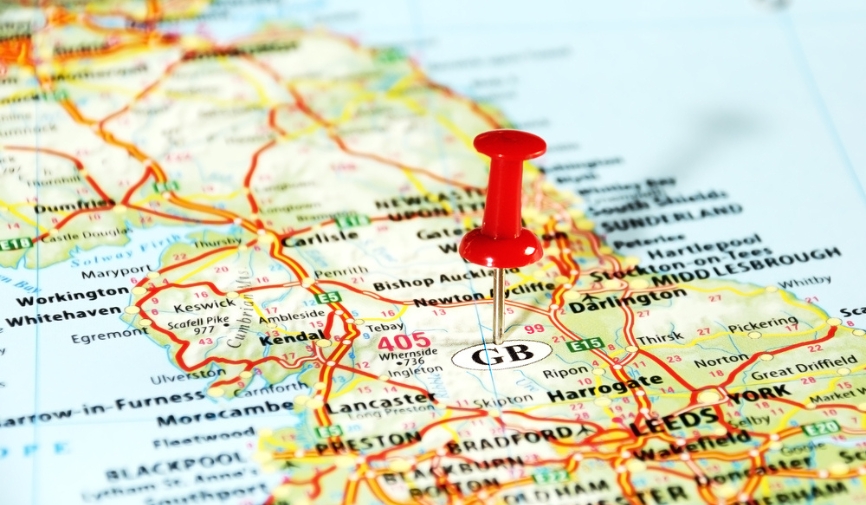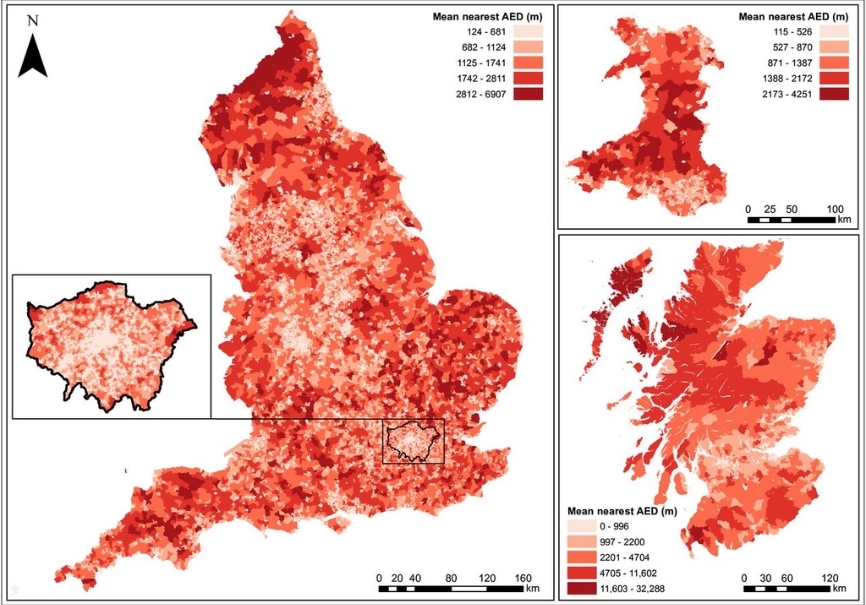In the UK, there are over 30,000 out-of-hospital cardiac arrests each year where emergency medical services attempt to resuscitate the victim. With less than one in ten patients surviving these events, there is an immense need for swift defibrillation to save lives.
However, significant gaps and disparities exist in the placement and accessibility of automated external defibrillators (AEDs) across different regions and demographics in the UK. Those living in deprived or rural areas are much less likely to have an AED available nearby compared to more affluent urban communities. This inequality directly impacts survival rates and outcomes.
There is an urgent need to address these AED placement disparities to ensure all citizens, regardless of socioeconomic status or geography, have equal access to this lifesaving technology.
Swifter defibrillation could save thousands more lives each year by doubling survival rates. Through greater public awareness, advocacy, policy changes and cross-sector partnerships, we can help close this dangerous gap in AED accessibility. The human impact of these disparities is unacceptable but solvable if we take action.
The Placement Disparities of AEDs in the UK
Research highlights troubling inequities in access to automated external defibrillators (AEDs) across different socioeconomic groups in the UK. While AEDs are crucial lifesaving devices for cardiac arrest victims, this study found significant placement disparities that disadvantage more deprived communities.
Specifically, the average distance to a 24/7 publicly accessible AED was over a mile in the most deprived areas of both England and Scotland. This is concerning, given that immediate defibrillation can increase survival odds by up to 70%.
With every minute that passes before shock delivery, survival chances decrease by 10%. The large distances to 24/7 AEDs for lower-income neighbourhoods translate into crucial lost minutes and lower survival probabilities.
Image Source: Heart BMJ
Exacerbation of Existing Health Inequalities
Experts point out that limited AED placement in deprived areas exacerbates existing health inequalities. Populations in less affluent regions already suffer from higher rates of heart disease risk factors like diabetes, obesity, and smoking. Reduced access to AEDs further stacks the odds against cardiac arrest victims from lower socioeconomic backgrounds.
Further studies underscore the need for AED programs to intentionally focus efforts on increasing device density in deprived residential areas. Otherwise, lifesaving technology will remain out of reach for the populations that need it most.
Why Do These Disparities Exist?
Several interrelated factors help explain the gaps and inequities in automated external defibrillator (AED) placement observed across different demographics and regions in the UK.
Funding Issues
Funding constraints and budget limitations for local councils have restricted their ability to acquire and install AEDs in underserved areas. Councils covering more deprived communities often face greater budget pressures overall.
Public Awareness
There is also a lack of public awareness and grassroots advocacy around the issue, meaning it flies under the radar. Without vocal demand from citizens, the gaps can persist.
Top-Down Decision Making
Decision-making on AED placement is often centralised and top-down without adequate community consultation and input. This can result in misalignment between actual public needs and AED locations.
Solving the Problem
Tackling the disparities in automated external defibrillator (AED) placement will require a multifaceted approach with holistic aims.
Healthcare Bodies
Healthcare bodies like the British Heart Foundation have called for legislation mandating AED installation in all public places. Targeted government funding has also been recommended to subsidise AEDs in underserved areas.
Policy Changes
Policy changes could incentivise or require businesses to install AEDs. Tax credits may spur wider voluntary adoption. Regulators can set standards for more systematic, equitable AED coverage by private-sector providers.
Advocacy
Advocacy by community or nationwide groups, like our partnership with the Premier League, can drive change locally. This initiative helped to provide AEDs to up to 2,300 grassroots football clubs and sporting facilities across England.
Public Education
Public education and awareness campaigns play a key role. They empower citizens to advocate for change and demystify AED use to boost willingness to intervene in a crisis.
Flexible Funding Methods
For many communities, the financial barrier that must be overcome to access an AED can be challenging. It’s important to be aware of the various funding routes to gain access to an AED for your community. Or, consider options such as leasing an AED to spread the cost, making it more manageable.
Accessible and Affordable Lifesaving Equipment with WEL Medical
At WEL Medical, we are committed to promoting heart health for all through our innovative AED solutions designed to meet the needs of diverse communities. Our mission is to make lifesaving technology as accessible as we can.
Through flexible financing options, tailored partnerships and community-focused programs, we can help bring AEDs to currently underserved neighbourhoods, rural areas and vulnerable populations across the UK.
By working together, we have the power to build a future where cardiac arrest is no longer a death sentence due to lack of access to an AED. Let’s create a national safety net that protects every life. Contact WEL Medical to learn more about our efforts to ensure universal AED access and availability.








